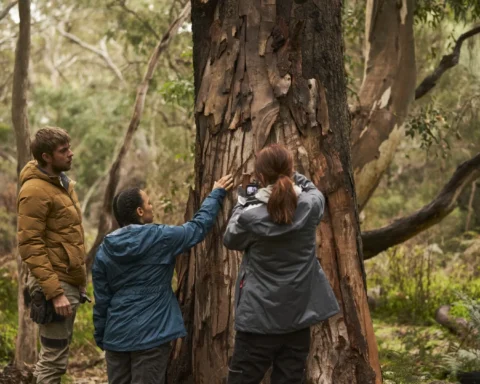Developed by Frogwares and released in 2019, The Sinking City is a horror-action adventure heavily inspired by the works of H.P. Lovecraft. Set in a bleak, flooded city called Oakmont, the game offers a complex detective storyline that combines psychological horror, occult mysteries, and social commentary on isolation and madness. The game’s ambitious structure blends an open-world approach with mystery-solving mechanics, positioning players as private investigator Charles Reed, tasked with unraveling supernatural mysteries and confronting his own disturbing visions. This review delves into the game’s design, story, gameplay mechanics, graphics, and artistic style, examining both its achievements and areas where it might falter.
Story and Narrative Depth
1. A Psychological Thriller Rooted in Lovecraftian Horror
The Sinking City presents players with a narrative deeply inspired by Lovecraftian themes, where the line between sanity and madness is thin. The story follows Charles Reed, a veteran and private investigator plagued by unsettling visions. These visions lead him to Oakmont, a city isolated from the rest of the world due to a mysterious flood. Oakmont is populated by a unique cast of characters, ranging from the grimly pragmatic to the outright monstrous, and it is Reed’s interactions with these people that drive much of the narrative. The game does an excellent job of invoking Lovecraft’s thematic concerns—xenophobia, isolation, and humanity’s insignificance in a universe populated by incomprehensible horrors.
Reed’s journey through Oakmont is, at its core, a personal descent into madness. The flood has left the city submerged, both physically and metaphorically, in its own dark secrets, and Reed’s investigation often veers into unsettling supernatural occurrences. His backstory as a war veteran also adds psychological layers to his character, blending trauma with the more surreal elements of the plot. This is a narrative where players must question their perception of reality, and this theme reverberates through every interaction, mission, and event.

2. Player-Driven Choices with Moral Complexity
Unlike many narrative-driven games that heavily rely on linear storytelling, The Sinking City allows players to make meaningful decisions that shape Reed’s journey. In several quests, players have to make morally ambiguous choices, forcing them to weigh Reed’s own sanity, his ethical compass, and the potential outcomes for Oakmont’s residents. These decisions are not always clearly marked; instead, the game nudges players toward introspection, asking them to decide what kind of investigator Reed will be.
Despite the richness of the narrative, the game can sometimes feel overly vague, with quest objectives that are easily overlooked. The decision-making system, though ambitious, could benefit from more substantial consequences to highlight the player’s moral impact on Oakmont.
Gameplay Mechanics and Experience
1. Investigation and Puzzle-Solving
Investigation lies at the heart of The Sinking City, with each case requiring players to use detective skills and logic rather than brute force. Players need to gather clues, analyze evidence, and use Reed’s “Mind Palace,” a mental repository where clues are stored and linked to draw conclusions. This unique system requires players to make connections between seemingly unrelated evidence, encouraging both curiosity and critical thinking. However, this feature is not always intuitive. Players may struggle with drawing the correct inferences, which can sometimes lead to frustration.
Moreover, Reed’s abilities as a detective are supplemented by supernatural powers. His visions allow him to reconstruct scenes, track down hidden clues, and reveal details invisible to the human eye. These mechanics lend a mystical feel to the investigation process, allowing players to experience Reed’s mental struggles first-hand. However, these powers do not evolve much as the story progresses, and some players might find the mechanics repetitive over time.
2. Combat Mechanics and Survival Elements
Combat in The Sinking City incorporates survival horror mechanics, where resource management is crucial. Ammunition, health packs, and crafting materials are limited, which adds tension to encounters. The combat itself, however, is often seen as one of the game’s weaker elements. Gunplay feels clunky, with enemies that are sometimes unpredictable and AI behavior that lacks variety. While this could be seen as amplifying the sense of helplessness—an essential component in horror games—the result can be more frustrating than suspenseful, as players might find themselves avoiding combat whenever possible.
Combat also lacks the polish found in similar games, as animations and controls occasionally feel sluggish, detracting from immersion. However, the sporadic appearance of large, terrifying creatures and the constant scarcity of resources contribute significantly to the game’s atmosphere, underscoring the horror of Reed’s situation.

3. Open-World Exploration and Side Missions
The city of Oakmont is open for players to explore from the beginning, with multiple districts each reflecting different economic, social, and moral statuses. This open-world structure, while ambitious, can feel overwhelming, as the game lacks traditional guidance markers. Instead, players must navigate the city using maps and rely on clues to locate objectives. This approach emphasizes realism but can lead to frustration, especially when the main narrative is put on hold as players struggle with navigation.
Oakmont’s districts also host a variety of side missions, many of which are as haunting and complex as the main quests. These optional quests often expand on the city’s lore, adding depth to Oakmont’s twisted society. However, the game’s non-linear approach to side missions means they can sometimes detract from the primary storyline, as pacing becomes uneven. Additionally, the lack of a fast-travel system can make repeated trips across Oakmont feel laborious.
Visuals and Artistic Design
1. Atmospheric Graphics and Environmental Design
The Sinking City excels in environmental storytelling, as Oakmont’s design reflects a decaying city haunted by tragedy and the supernatural. From the eerie, waterlogged streets to the decrepit buildings, every aspect of the city visually reinforces the theme of isolation. The game’s graphics, while not technically groundbreaking, are bolstered by an effective use of color and lighting, where muted tones and shadows dominate. Oakmont’s flooded streets and gloomy interiors are laced with details that tell their own stories, enhancing the sense of immersion.

That said, the technical quality of the graphics varies. Some textures can appear muddy, and the character models lack the detail seen in more polished games. Additionally, there are occasional bugs and graphical glitches that disrupt immersion, such as textures not loading properly or NPCs displaying stilted animations. Despite these flaws, the game’s atmosphere is distinct, thanks to Frogwares’ dedication to visual world-building.
2. Character Design and Creature Concepts
The citizens of Oakmont are as peculiar as the city itself. The game’s character designs reflect a society deeply fractured by tragedy and superstition, with different factions displaying unique appearances that hint at their heritage and social status. Characters from the Throgmorton family, for example, possess exaggeratedly simian features, hinting at inbreeding and genetic deformities, while members of the Innsmouth Look—a group associated with aquatic monstrosities—are unsettling in their fish-like attributes.
Equally noteworthy are the creature designs. Drawing on Lovecraft’s imagery, The Sinking City presents a nightmarish array of monsters, each with a distinct look and behavior. The grotesque, often fish-like qualities of these entities are rendered with considerable attention to detail, giving players a sense of being truly outmatched by the horrors lurking in the city. These designs play a vital role in creating an atmosphere of unease and fear.
3. Sound Design and Musical Score
The soundscape of The Sinking City contributes immensely to its immersive experience. The game’s ambient sound design is laced with haunting effects: the distant cry of an unseen creature, the groaning of waterlogged structures, and the eerie silence that permeates the flooded areas. These sounds keep the tension high, constantly reminding players that Oakmont is not a safe place.
The musical score is similarly restrained, featuring atmospheric tones that avoid overshadowing the game’s visual and narrative design. Instead, the soundtrack complements the gameplay, adding layers of dread without distracting from the investigative focus. This restrained approach to sound design makes the few moments of dramatic music all the more impactful.

Artistic and Thematic Influences
1. Lovecraftian Themes and Existential Horror
Lovecraft’s influence is unmistakable throughout The Sinking City. The game expertly weaves Lovecraftian themes such as the insignificance of humanity, the allure of forbidden knowledge, and the decay of civilization into both its plot and setting. The flood, both literal and metaphorical, represents Oakmont’s descent into a madness that mirrors Lovecraft’s cosmic horror—humans driven to insanity by forces they cannot comprehend.
By placing players in Reed’s shoes and confronting them with unfathomable horrors, The Sinking City encourages players to question their role in an uncaring universe. This exploration of existential dread aligns well with Lovecraft’s philosophy, making the game’s horror both psychological and philosophical.
2. Social Commentary on Isolation and Division
The game also explores themes of isolation and prejudice, both of which are central to Oakmont’s society. Its citizens are divided by class, ethnicity, and affiliation, reflecting the social hierarchy and xenophobia common in Lovecraft’s works. Different factions have their own agendas, and the player must navigate these complex dynamics to achieve their goals. This exploration of social tension adds layers to the story, presenting a city that is not only isolated by geography but also deeply fragmented by prejudice and mistrust.
The use of these themes as both a storytelling and gameplay device enriches the experience, encouraging players to reflect on the nature of division, isolation, and the human propensity for fear and exclusion. The portrayal of Oakmont’s societal breakdown ultimately serves as a reflection of the dark facets of humanity, underscoring the horror that emerges from within society as much as from supernatural forces.

A horrific detective gameplay
The Sinking City is an ambitious title that melds detective gameplay with horror, providing players with a unique, if imperfect, experience. Frogwares has crafted a setting and narrative that draws heavily from Lovecraftian lore, immersing players in a haunting world where the mundane and the supernatural intersect. While the game’s investigation mechanics and moral choices are thoughtfully implemented, other elements, such as combat and open-world navigation, can feel unrefined. Graphically, Oakmont is richly designed, albeit with occasional technical hiccups.
In the end, The Sinking City stands as a flawed yet captivating exploration of psychological horror and social commentary. It may not appeal to everyone, especially those who prioritize polished mechanics and seamless graphics. However, for fans of Lovecraft and players drawn to atmospheric horror, it offers an engaging narrative that challenges players to confront both cosmic terror and the darkness within humanity. Frogwares’ title thus emerges as a memorable experience, leaving players with much to ponder long after they leave the sunken streets of Oakmont.









